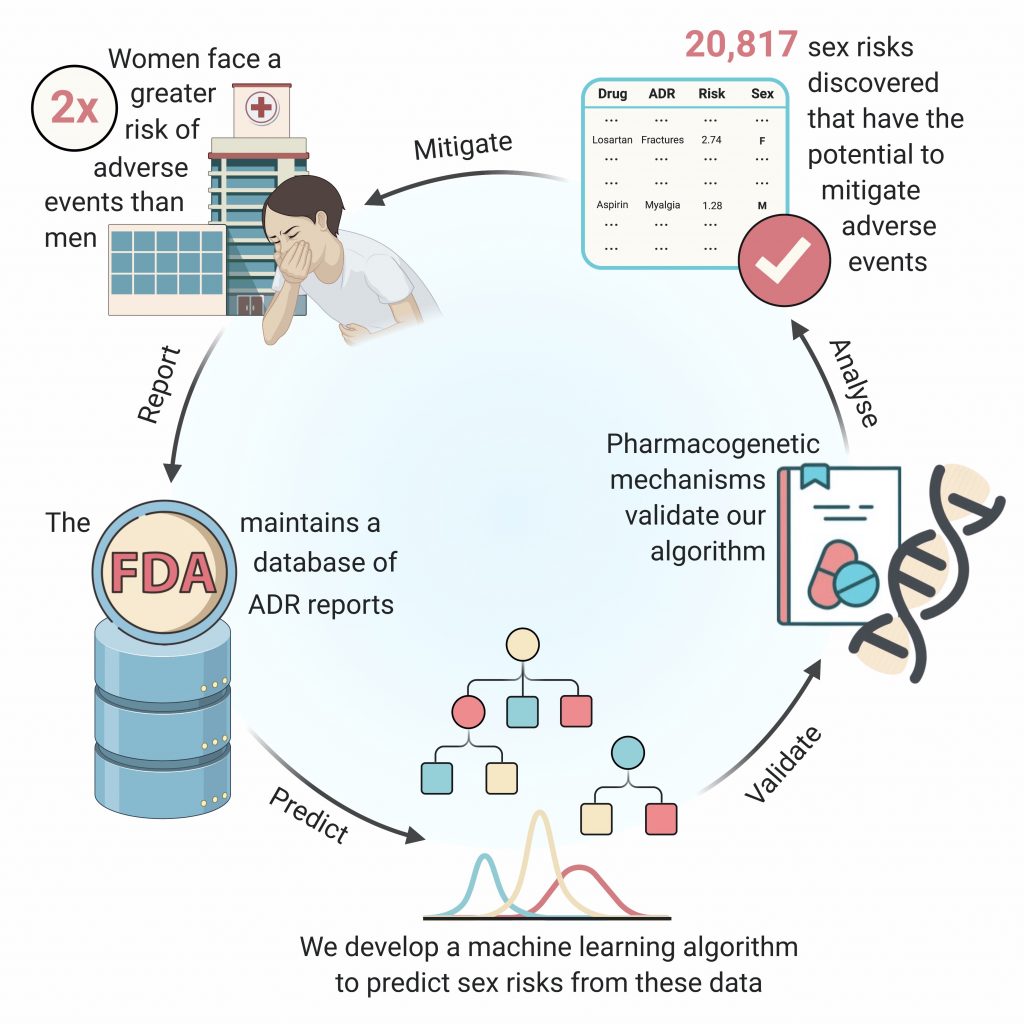Research by CS Undergrad Published in Cell
Payal Chandak (CC ’21) developed a machine learning model, AwareDX, that helps detect adverse drug effects specific to women patients. AwareDX mitigates sex biases in a drug safety dataset maintained by the FDA.
Below, Chandak talks about how her internship under the guidance of Nicholas Tatonetti, associate professor of biomedical informatics and a member of the Data Science Institute, inspired her to develop a machine learning tool to improve healthcare for women.

How did the project come about?
I initiated this project during my internship at the Tatonetti Lab (T-lab) the summer after my first year. T-lab uses data science to study the side effects of drugs. I did some background research and learned that women face a two-fold greater risk of adverse events compared to men. While knowledge of sex differences in drug response is critical to drug prescription, there currently isn’t a comprehensive understanding of these differences. Dr. Tatonetti and I felt that we could use machine learning to tackle this problem and that’s how the project was born.

How many hours did you work on the project? How long did it last?
The project lasted about two years. We refined our machine learning (ML) model, AwareDX, over many iterations to make it less susceptible to biases in the data. I probably spent a ridiculous number of hours developing it but the journey has been well worth it.
Were you prepared to work on it or did you learn as the project progressed?
As a first-year student, I definitely didn’t know much when I started. Learning on the go became the norm. I understood some things by taking relevant CS classes and through reading Medium blogs and GitHub repositories –– this ability to learn independently might be one of the most valuable skills I have gained. I am very fortunate that Dr. Tatonetti guided me through this process and invested his time in developing my knowledge.
What were the things you already knew and what were the things you had to learn while working on the project?
While I was familiar with biology and mathematics, computer science was totally new! In fact, T-Lab launched my journey to exploring computer science. This project exposed me to the great potential of artificial intelligence (AI) for revolutionizing healthcare, which in turn inspired me to explore the discipline academically. I went back and forth between taking classes relevant to my research and applying what I learned in class to my research. As I took increasingly technical classes like ML and probabilistic modelling, I was able to advance my abilities.
Looking back, what were the skills that you wished you had before the project?
Having some experience with implementing real-world machine learning projects on giant datasets with millions of observations would have been very valuable.
Was this your first project to collaborate on? How was it?
This was my first project and I worked under the guidance of Dr. Tatonetti. I thought it was a wonderful experience – not only has it been extremely rewarding to see my work come to fruition, but the journey itself has been so valuable. And Dr. Tatonetti has been the best mentor that I could have asked for!
Did working on this project make you change your research interests?
I actually started off as pre-med. I was fascinated by the idea that “intelligent machines” could be used to improve medicine, and so I joined T-Lab. Over time, I’ve realized that recent advances in machine learning could redefine how doctors interact with their patients. These technologies have an incredible potential to assist with diagnosis, identify medical errors, and even recommend treatments. My perspective on how I could contribute to healthcare shifted completely, and I decided that bioinformatics has more potential to change the practice of medicine than a single doctor will ever have. This is why I’m now hoping to pursue a PhD in Biomedical Informatics.
Do you think your skills were enhanced by working on the project?
Both my knowledge of ML and statistics and my ability to implement my ideas have grown immensely as a result of working on this project. Also, I failed about seven times over two years. We were designing the algorithm and it was an iterative process – the initial versions of the algorithm had many flaws and we started from scratch multiple times. The entire process required a lot of patience and persistence since it took over 2 years! So, I guess it has taught me immense patience and persistence.
Why did you decide to intern at the T-Lab?
I was curious to learn more about the intersection of artificial intelligence and healthcare. I’m endlessly fascinated by the idea of improving the standards of healthcare by using machine learning models to assist doctors.
Would you recommend volunteering or seeking projects out to other students?
Absolutely. I think everyone should explore research. We have incredible labs here at Columbia with the world’s best minds leading them. Research opens the doors to work closely with them. It creates an environment for students to learn about a niche discipline and to apply the knowledge they gain in class.

